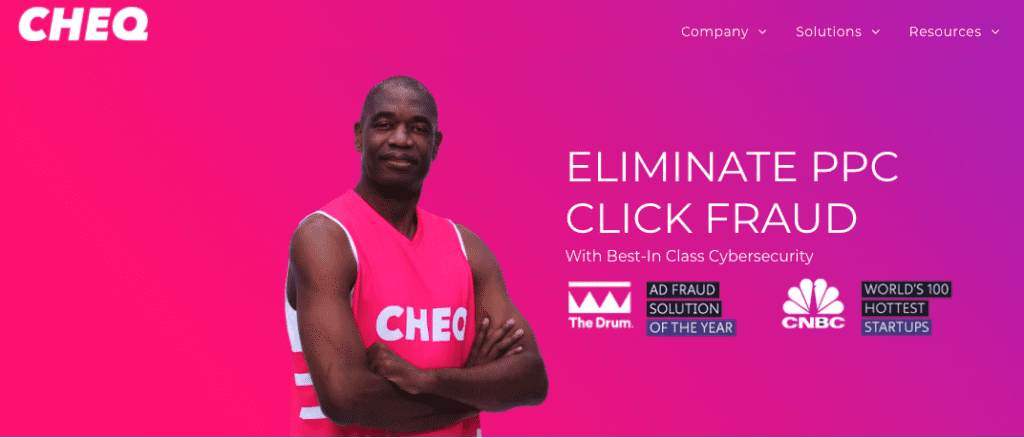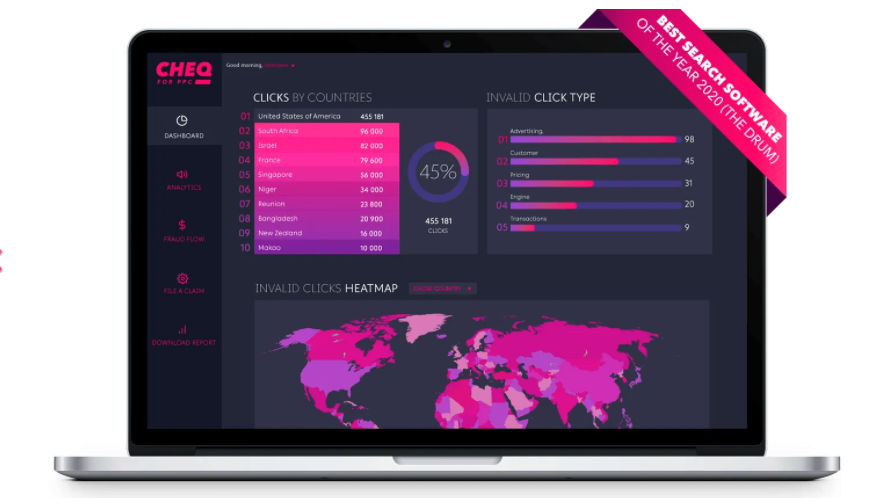Ad fraud prevention firm CHEQ recently expanded its verification solutions to include protection for PPC campaigns with CHEQ PPC.
The tool now supports both paid social and paid search advertising.
In this article, I’ll go over the new features.

The Problem with Click Fraud
According to the folks at CHEQ, click fraud is on the rise with nearly one in five clicks on PPC ads coming from non-human traffic.
Company CEO Guy Tytunovich says that Google, Facebook, and other ad platforms do a good job of fighting click fraud, but there’s still work to be done. He claims there’s an “inherent problem of solving [it] when you’re the biggest sitting duck on the Internet.”
Tytunovich also says that there’s a certain percentage of fraud that “they could never eradicate.”
Enter CHEQ PPC
CHEQ PPC adds a layer of protection against fraudulent clicks from Google Ads, Facebook Ads, and other PPC platforms.

The tool uses “thousands and thousands of honey pots” under the covers to identify dubious behavior. It blocks bots, scrapers, crawlers, click farms, and foreign clicks.
CHEQ PPC will even stop suspicious human behavior.
That means the ad platforms won’t need to reimburse advertisers (for the most part). The tool prevents the click from happening because fraudulent users don’t get targeted.
For those few that do slip through the cracks, advertisers will receive a notification so they can request a refund.
The tool works with many of the popular ad networks: Google, Facebook, LinkedIn, Twitter, Snapchat, and Quora.
CHEQ PPC currently offers two pricing models:
- Small business – Priced for click volume.
- Enterprise – Priced for media spend.
How Does CHEQ PPC Detect Fraudulent Traffic?
It does so with the aid of JavaScript.
All you need to do, if you sign on with CHEQ, is place a JavaScript tag in your code. The platform will handle the rest.
You can be up and running in just a few minutes.
Also, it’s worth noting that CHEQ PPC is an ever-evolving platform. That means it’s always on the lookout for sneaky new click-fraud attempts.
To that end, the PPC tool allows a small amount of bot traffic to get through. It does so for monitoring purposes.
You can see the fraudulent activity on the dashboard and break it down by campaigns or keywords.
Use that dashboard to gain some insight into the kind of fraudulent activity you’d pay for if you didn’t harden your website with CHEQ.
CHEQ PPC even displays a heatmap so you can see how sophisticated bots scroll through your pages.
A Case Study
Here’s how CHEQ helped a leading SaaS company save money on advertising.
The firm launched a remarketing campaign to potential users. However, the marketing team became concerned that much its budget would get spent on advertising to bots and crawlers.
So the team implemented CHEQ to uncover invalid clicks. The tool successfully blocked bad users from paid search and social campaigns.
In fact, the software found that almost 9% of the company’s organic ad clicks came from non-human users. Those clicks were generated by malicious crawlers.
Further, CHEQ segmented the invalid users into an audience in the company’s ad account. The company then prohibited its ads from appearing to users in that audience.
In other words, the SaaS company enjoyed perpetual savings because of its investment in CHEQ.
Wrapping It Up
If you’re concerned about click fraud from your search or social campaigns, you should sign on with a service that blocks bot traffic. CHEQ PPC is one such service.
You can visit the company website and request a free demo. Then, make an informed decision about whether or not you should move forward.
